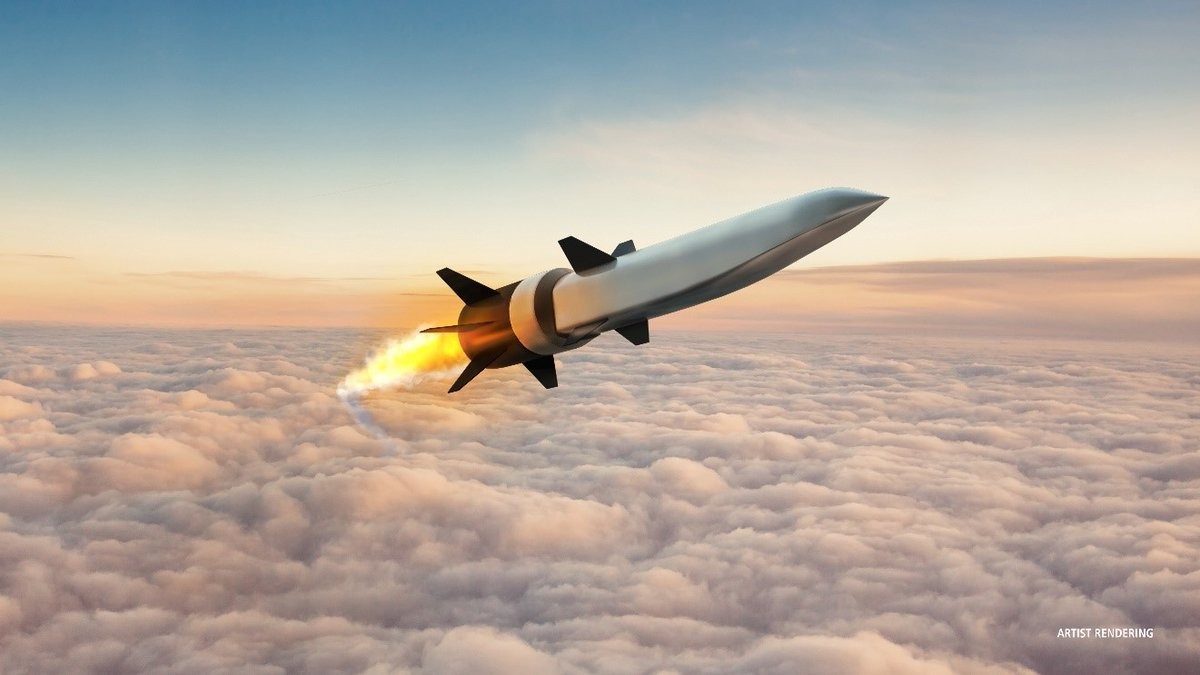Lockheed Martin tests new hypersonic weapon concept for DARPA
The missile prototype cruised at five times the speed of sound 'for an extended period.'

A Lockheed Martin hypersonic missile prototype flew at five times the speed of sound "for an extended period" during a recent successful technology test for the U.S. military.
The hypersonic weapons test, which was announced April 5 by the Defense Advanced Research Projects Agency (DARPA), marked the second flight for the Hypersonic Air-breathing Weapon Concept (HAWC) program following a September 2021 test by Raytheon Technologies, DARPA officials said in a statement.
Program officials framed the new flight as a major milestone in the hypersonic program, which aims to conduct military operations at swifter speeds and with higher effectiveness compared to what's currently available.
Related: The most dangerous space weapons concepts ever
"We are still analyzing flight test data, but are confident that we will provide the U.S. Air Force and Navy with excellent options to diversify the technology available for their future missions," said Andrew Knoedler, DARPA's HAWC program manager for the tactical technology office, in the statement.
Related: US military eyes nuclear thermal rocket for Earth-moon space

A press release from Lockheed noted the vehicle reached an altitude of 65,000 feet (nearly 19,812 meters), which is double the cruising altitude of a typical commercial flight. The vehicle will "address rapidly emerging threats in the global security arena," John Clark, vice president and general manager of Lockheed Martin Skunk Works, said in his company's statement.
Get the Space.com Newsletter
Breaking space news, the latest updates on rocket launches, skywatching events and more!
DARPA and the U.S. Air Force are jointly working together on funding and supporting the HAWC program. Raytheon and Northrop Grumman together disclosed $200 million in funding for the project in 2019, while Lockheed Martin received nearly $1 billion in 2018, according to DefenseNews.com.
The program is seeking to assess feasibility, effectiveness and affordability across a series of flight demonstrations, and is by no means the first effort by U.S. military officials to work on hypersonic systems, either crewed or uncrewed.
A selection of other programs of hypersonic speeds include the 1950s-era X-20 Dyna-Soar that was designed to launch on a rocket, the FALCON hypersonic program (short for Force Application and Launch from CONtinental United States) of the early 2000s and Blackswift, which was later canceled.
Follow Elizabeth Howell on Twitter @howellspace. Follow us on Twitter @Spacedotcom and on Facebook.
Join our Space Forums to keep talking space on the latest missions, night sky and more! And if you have a news tip, correction or comment, let us know at: community@space.com.

Elizabeth Howell (she/her), Ph.D., was a staff writer in the spaceflight channel between 2022 and 2024 specializing in Canadian space news. She was contributing writer for Space.com for 10 years from 2012 to 2024. Elizabeth's reporting includes multiple exclusives with the White House, leading world coverage about a lost-and-found space tomato on the International Space Station, witnessing five human spaceflight launches on two continents, flying parabolic, working inside a spacesuit, and participating in a simulated Mars mission. Her latest book, "Why Am I Taller?" (ECW Press, 2022) is co-written with astronaut Dave Williams.








